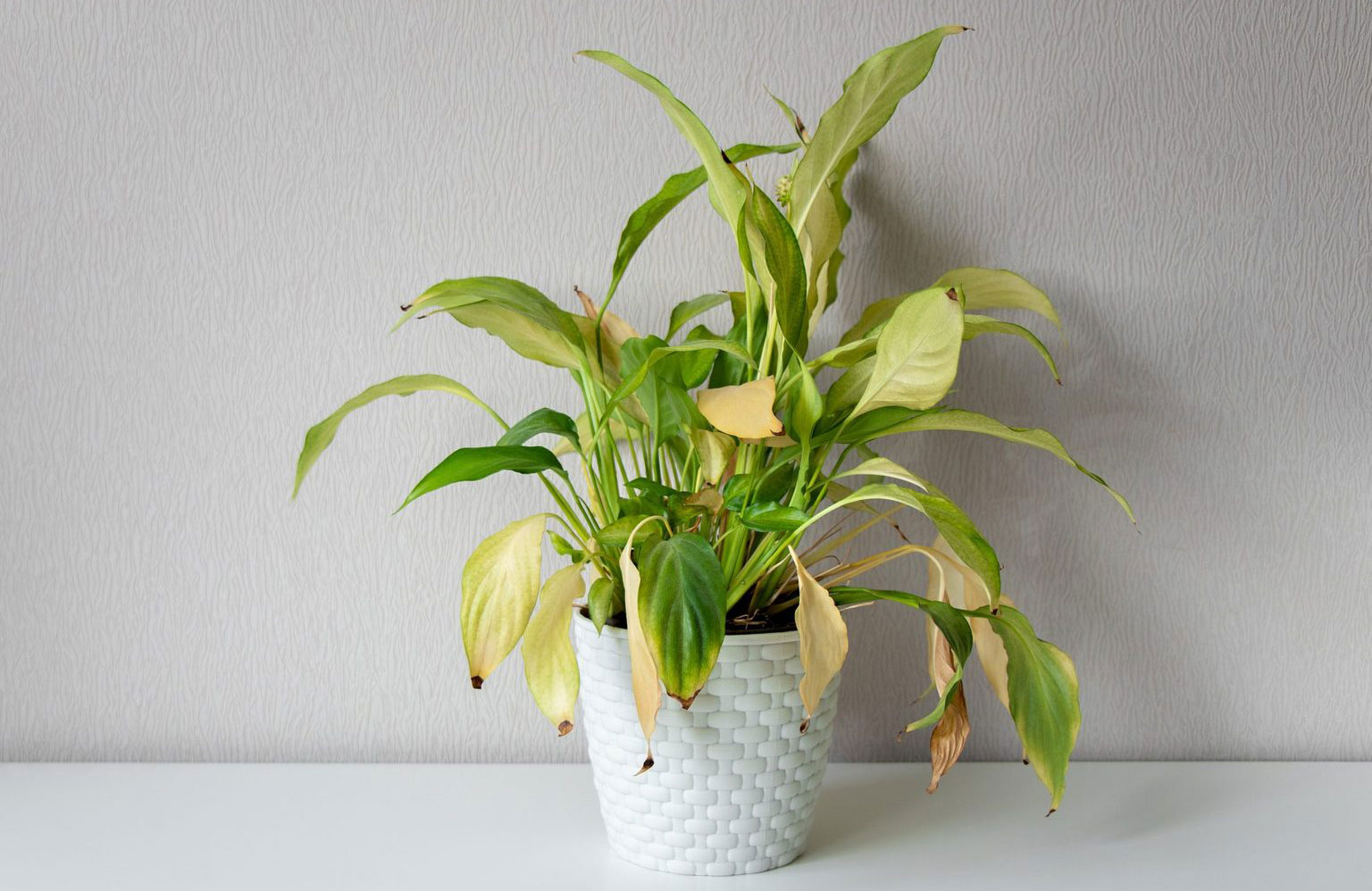All may not be lost!

If you’re here, chances are you’ve got a dead plant on your hands. Don’t be too hard on yourself – it happens to the best of us, and sometimes even with the most low-maintenance plants. But we’ve got some good news for you: Your sad-looking plant may be only mostly dead, to borrow a line from The Princess Bride, and you might actually be able to revive it. “Some of the most common reasons for a plant to deteriorate are overwatering or underwatering, not getting the right amount of sun, changes to their environment, bugs and pests, or nutrient deficiencies,” says gardening expert John Valentino. “All of these problems can be fixed, as long as you notice them in time.”
Of course, we’re here to tell you exactly how to do that. From identifying even the most subtle signs of life to correcting the mistakes you’ve made, these simple steps will help you return your plant to its former glory.
These are the 18 best air-cleaning plants, according to NASA.
Step 1: Look for signs of life

When it comes to plants, “dead” is a relative term. It may look like your plant is a goner, but when you take a closer look, that may not actually be the case. If there’s any green left on the plant, you might still be in business. “Any signs of green on the stem mean there’s a chance you’ll be able to bring it back to life,” says Valentino.
You should also check the roots. As the plant’s support system, they provide a lot of information about the state of its overall health. Translation: Even if the visible parts of the plant are a mess, the roots may still be receiving enough nutrients and water to keep it going. “Healthy roots should appear plump and be white to tan in colour with white tips,” says Jennifer Morganthaler, an agriculture instructor. “The roots should still be alive and have a chance to recover for any of these tips to work to save the plant.” If you do find signs of life, the next step is figuring out what went wrong and how to revive your plant.
Step 2: Check if you’ve overwatered

Plants need water to survive and thrive, but it’s possible to give a plant too much water. How can you tell? “Overwatered plants will have brown or yellow wilted leaves with moist soil,” says Valentino. “This will affect the roots, which can start to rot.” If you’ve been giving your plant too much water, you will need to make some changes – ASAP. “Move the plant out of direct sunlight and stop watering until the soil dries out,” advises Morganthaler. “If the soil is soggy, you may want to change the soil and the pot.” From there, do a little research. Look up your plant’s watering preferences, and make sure to follow that information to a T in the future.
Learn everything you need to know about watering houseplants.








